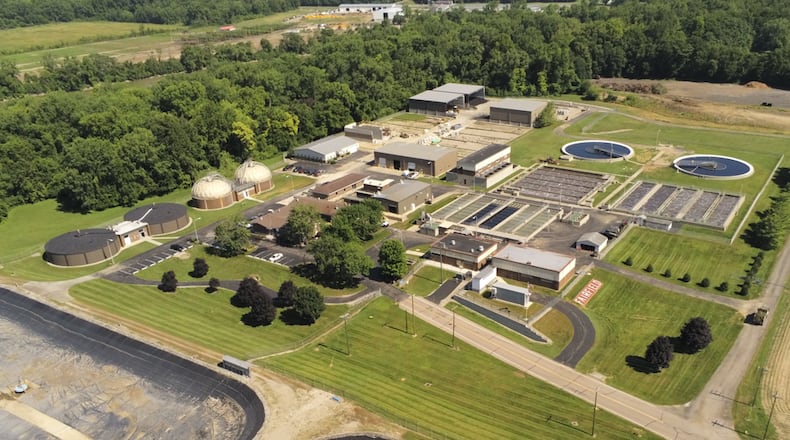The wastewater treatment plant went online in the mid-1960s, and a decade later was when the last major upgrades to the aeration and blower systems occurred, Sackenheim said, “and you can’t run these systems to failure.”
The way the aeration system works is that dissolved oxygen is added to the wastewater, which then promotes the proper environment for the microorganisms to grow and break down the waste, thus treating the water. Various mechanical and distribution elements in the process are failing, Sackenheim said. The blowers ― which are obsolete and make it highly difficult to maintain ― that provide the air to the system, the pipes that lead to the aeration tanks, and the diffuser assemblies in the tanks all need to be replaced.
“It’s a big project, there’s no doubt,” said Sackenheim, adding that $7 million “is a big ticket, for sure, but along with that (price tag) comes a whole lot more operational control.” The project is expected to go out for bid later this month.
Everything that will be installed will be Smart technology, and the city will be able to control it from its main control center. But Sackenheim said this upgrade will provide “a significant benefit” with his department’s ability to comply with wastewater treatment plant permits now and in the future.
“These permit limits are going to continue to get more stringent as environmental regulations do,” he said.
The project will be debt-financed, but there will also be a need to raise wastewater rates after the current series of increases end. Fairfield Council authorized a five-year increase in water and sewer rates starting in 2021 and ending in 2025. Wastewater rates are set to increase by 1.5% in 2024 and 2025, Sackenheim said, but that 1.5% rate increase ― which still needs City Council approval ― will likely need to continue annually from 2026 to 2030.
The city’s currently the 14th lowest water and sewer provider out of 64 jurisdictions in southwest Ohio, according to the Piqua water and sewer rate study. Sackenheim said even with “these small rate increases,” he believes the city will still be among the top 25% of the lowest water and sewer rates in the region.
The aeration system improvements are among $11 million worth of capital improvements in 2023. On the water side, the Public Utilities Department will continue its focus on water distribution projects. A contract has already been awarded to replace about a mile of water main on John Gray Road after the city received 11 bids. This $1.26 million project will start in March or April and could take about six months to complete. John Gray Road is set to be repaved in 2024, according to the Public Works Department.
Sackenheim said the East Palenstein train derailment “highlights the importance of protecting water resources” and the upkeep of both water and wastewater systems.
“We’ve had a lot of calls from our residents, we’ve had a lot of calls from our businesses asking, ‘Hey, is our water safe?’ That’s on the drinking water side, but our water is safe. We’re pumping it out of the (Great Miami Buried Valley Aquifer), and our aquifer is not connected to the Ohio River,” Sackenheim said. “However, we need to be mindful of the wastewater we’re treating and what we’re putting out in the river.”
This region’s aquifer is a reservoir of water that runs underneath the Great Miami River, stretching from Logan County to the Ohio River. In some places underground, it’s as wide as 2 miles beyond the banks of the river.
After this project, Sackenheim said there wouldn’t be a foreseeable big-ticket project for water or wastewater (outside of an unexpected water main burst), and annual capital budget spending would return to around $4.5 million collectively for both sides of Fairfield’s public utilities.
About the Author

